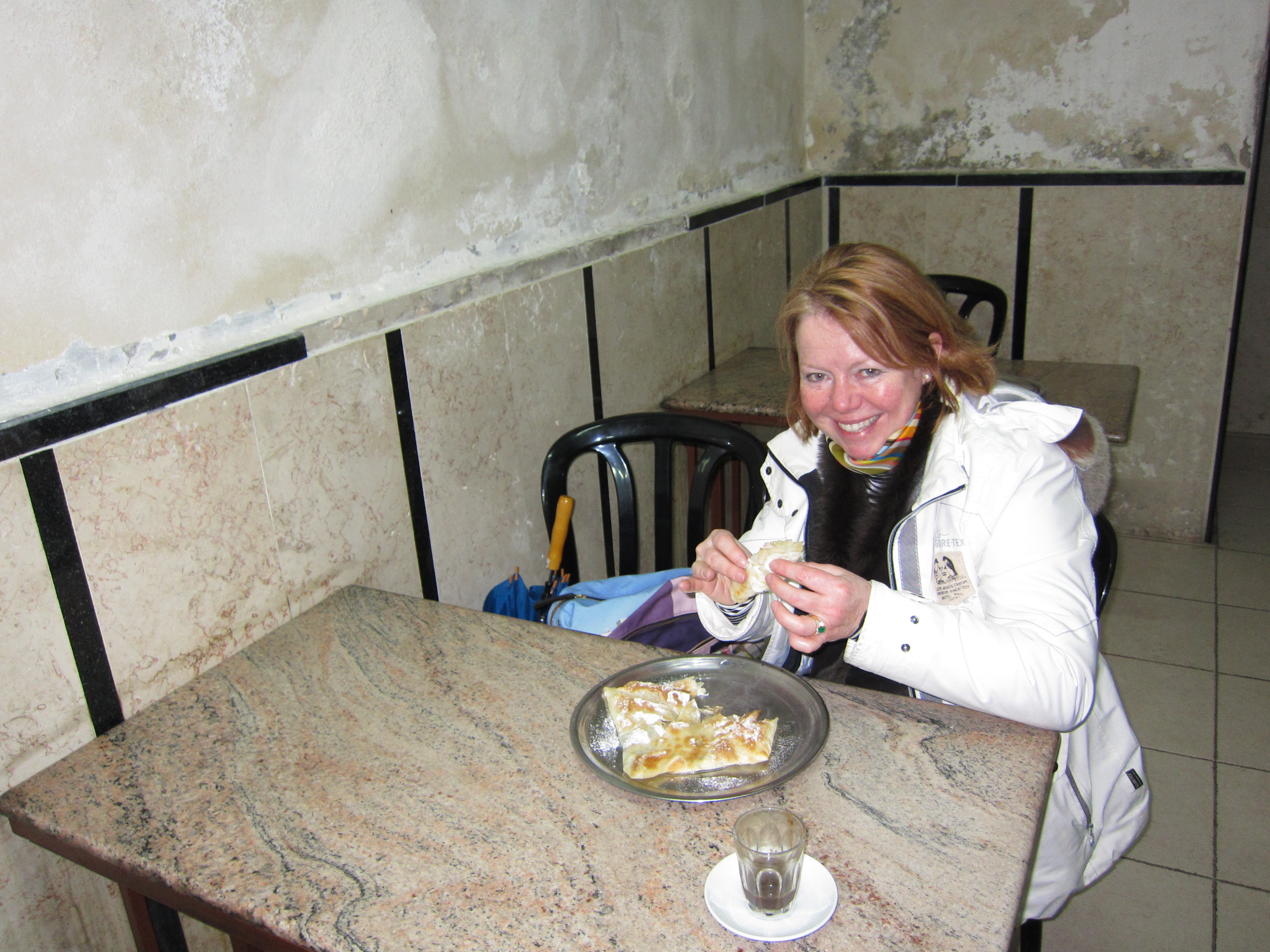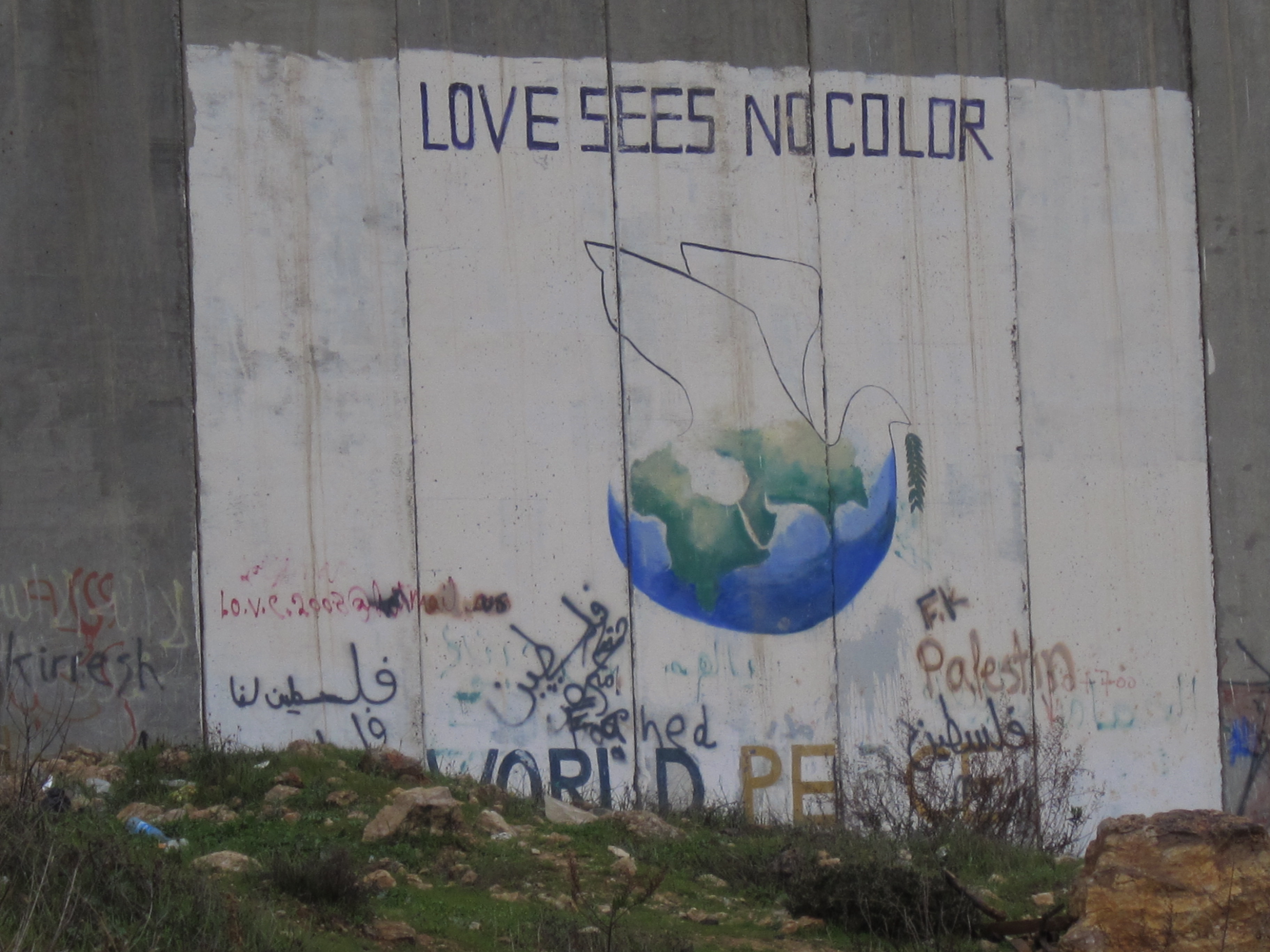Unexpected consequences of living on the ‘West Bank’.



An old woman approached me with a large iron key – it is the key to a family home that no longer exists. The woman is Palestinian and her home was bull-dozed to make way for a modern condominium development in the West Bank. These new settlements, often in a pseudo-American style clutter the hill tops of the West Bank. Many of these ’illegal developments’ are now occupied by Ultra Orthodox Jewish families recently arrived in the ‘Holy Land’ from the Central Asian Republics, especially Azerbaijan.
EarIier that day I made the journey from Jerusalem to Bethlehem. My first glimpse of the ‘Separation Wall’ that divides Israel from the West Bank made me feel physically ill. The wall is enormous, grey concrete with a huge curved dome-like top-piece designed to prevent any adventurous climbers. The pre-fabricated construction of the wall enables the authorities to extend it quickly and easily. It is impenetrable and frightening. To cross from one side to the other I was taken to a check point. It was a cold, wet day, grey and bleak. I was herded through endless concrete corridors with metal turn-stiles and angry looking guards. When I emerged on the Palestinian side, to my relief, my guide was waiting for me. I’d covered just one hundred metres and it was a different world.
My guide pointed out the boarded up shops, run down hotels and closed down businesses that used to employ local people on this once busy thoroughfare. The wall is like a giant axe that has severed the local Bethlehem economy from the rest of Israel and the rest of the West Bank. The wall has effectively amputated a limb from the body as a whole. Without freedom of movement, people, money, goods then commerce dwindles. I was taken to a gift shop – stacked full of trinkets – but without a single customer.





My guide worked in Toronto for several years – he is Palestinian born and bred. He came back to help raise awareness of the plight of his fellow Palestinians in the West Bank especially those in the Aida Refugee Camp. Palestinians have been systematically displaced by the Israelis over the last 40 years. The Camp was never meant to be permanent it was built to accommodate refugees of the 6-Day War back in 1967. Accommodation is crowded – there is water, electricity, some sanitation. But anyone that can leave does. The consequence is that the young and the old remain. Palestinians living here can only leave the West Bank by crossing into Jordan. Palestinian people have their movements controlled and regulated by the government, passports and visas are difficult to obtain.


We drive north to Ramallah a bustling and busy city. This is the capital of the Palestinian Territory and an important commercial centre for the Palestinians – they come here to shop, trade, socialise. But all around on every hill top you can see a new settlement – constructed by the Israelis to ‘colonise’ the West Bank. These developments tend to be inhabited by recently arrived Ultra Orthodox Jewish families from Azerbajan or Uzbekistan. Well let’s face it no-one from Tel Aviv is going to come and live on a hill top in the Judean Hills. Brand new highways are constructed to link the settlements with the rest of Israel – the Palestinians are not allowed to use these new roads. It is deemed a security risk.
An ironic and curious consequence of the increasing ‘Ultra Orthodox’ population is that the new arrivals often claim to be Talmudic scholars and therefore unable to work or fulfil their military service obligations. This makes them (and their very large families) an increasing drain on the Israeli social services. It also annoys the liberal inhabitants on the coast – all of whom have to both work and do their military service – with no exceptions! Raja Shehadeh a Palestinian lawyer and activist lives in Ramallah. As a keen walker he has written a wonderful book about walking in the hills of Palestine, his book is sub-titled ‘Notes on a Vanishing Landscape’. It describes perfectly the plight of the Palestinian people and the erosion of their territory by the Israeli government.
Is there hope – of course there is! The welcome that I received from the Palestinians living in the West Bank and also in Jerusalem was warm and friendly. There is a strong and vocal ‘liberal’ element in Israel campaigning vigorously for Palestinian rights. I met good people on both sides. In fact I came away focused on the similarities rather than the differences. In London recently I bought a copy of Yotam Ottolenghi’s cook book ‘Jerusalem’. It is a wonderful recipe book, it is also an insightful piece of social history. Ottolenghi is of Jewish-Italian heritage – his friend and co-author Sami Tamimi is Palestinian. They are both from Jerusalem – but they didn’t meet until they arrived in London. Their wonderful cook book takes recipes from Jewish and Palestinian kitchens and compares them – they are so similar!! I like to think of Ottolenghi and Tamimi as liberal Israelis, counter- balancing the actions of the Israeli government.



But whatever the liberal views of many Israelis may be, it is easy to observe that the poor treatment of the Palestinian people in the West Bank continues. In fact Banksy the British street artist has just opened a hotel in the West Bank designed to show what it is like to live within the shadows of the ‘Separation Wall’. In true Banksy style the hotel is wittily named ‘The Walled Off’ and has an unequalled view of the terrifying and monstrous wall. ‘Walled Off’ is a play on words referring to the famous ‘Waldorf’ Hotel in New York. Watch the promotional video of the hotel. The whole project is a work of genius. I urge you to read about Palestine, learn about the West Bank and visit if possible.
It is my view that people are generally good, the vast majority are living their lives, supporting their families, doing what they believe to be their best. We can’t allow small numbers of extremists, on both sides, to divert us from our cause to lead a good, honourable and truthful life, benefitting the majority.
Notes:
- Yotam Ottolenghi and Sami Tamimi are authors of ‘Jerusalem’ – A cook book and also a social history. Just wonderful, with fabulous photography. ISBN is: 978-0-09-194374-5
- Raja Shehadeh is a lawyer, writer and activitist – he wrote ‘Palestinian Walks’ in 2007. ISBN 978-1-86197-899-8
- The hotel opened in Bethlehem by Banksy – the street artist is called: The Walled Off Hotel – you can discover more here: A video introducing ‘The Walled Off Hotel, Bethlehem




For other articles on the West Bank, Jerusalem and Jericho:
- Kathleen Kenyon – Archaeologist an article about excavations in Jericho
- The West Bank – Jericho and Hisham’s Palace
- Jerusalem – the medieval city
- Peace in the desert
Updated: 05 March 2017 / 05 May 2021


5 thoughts on “The West Bank and the Separation Wall”